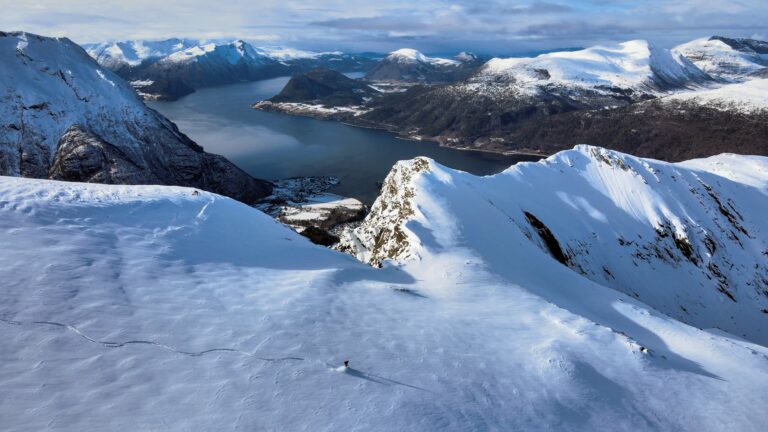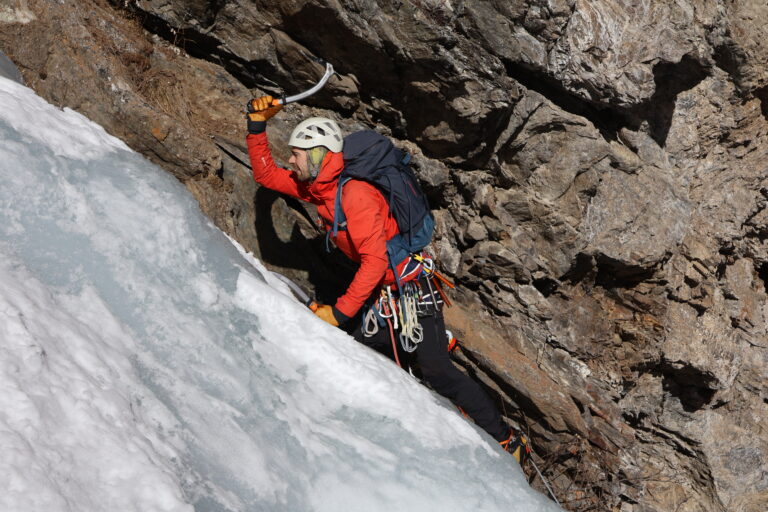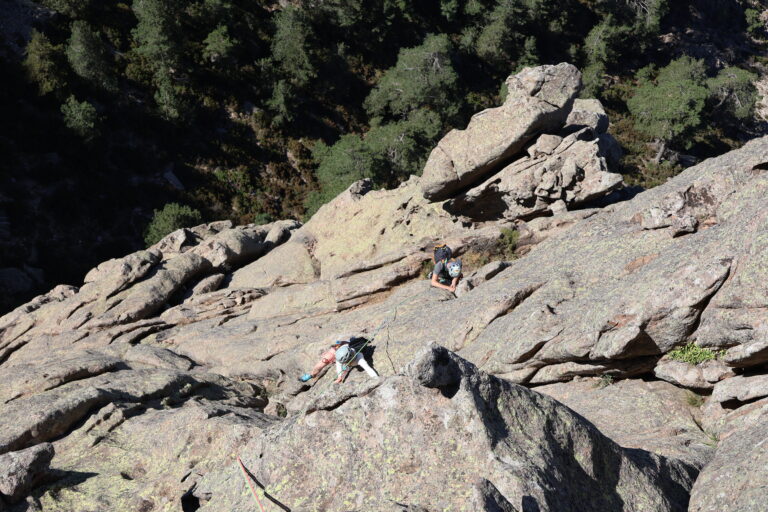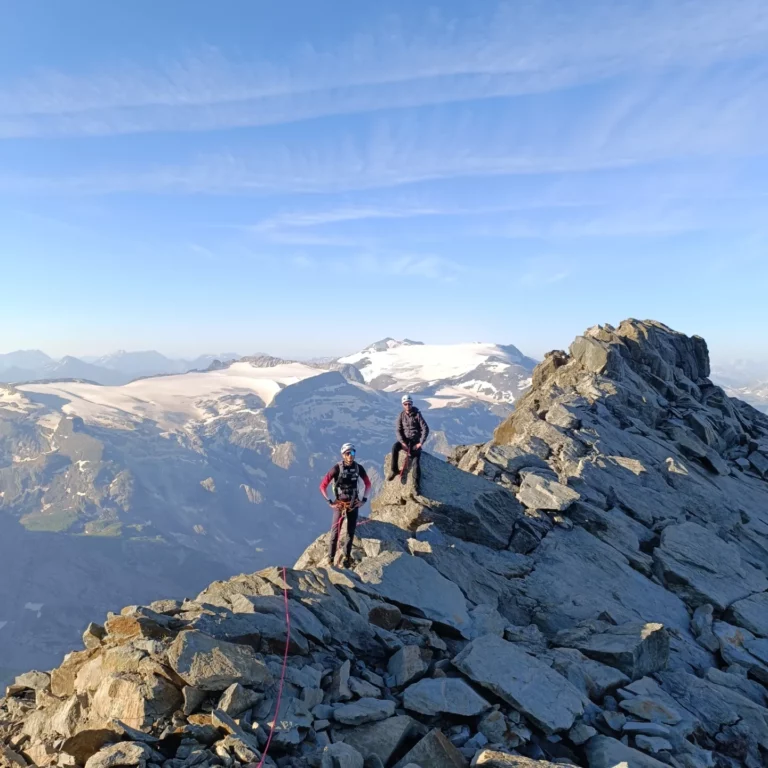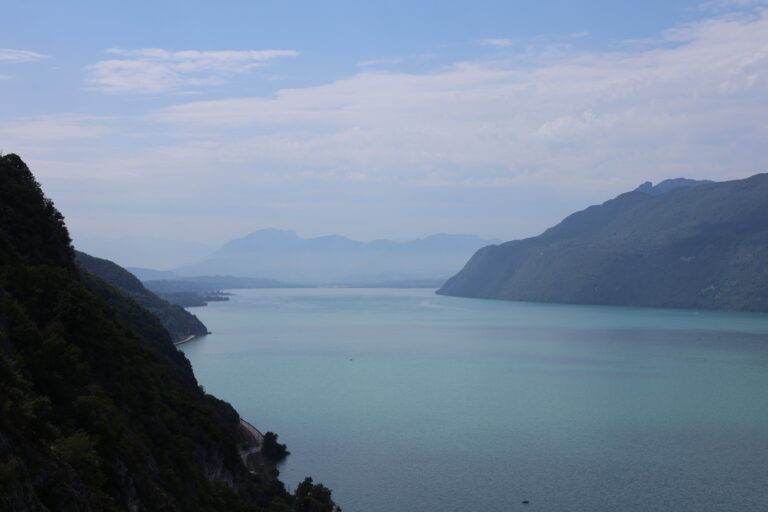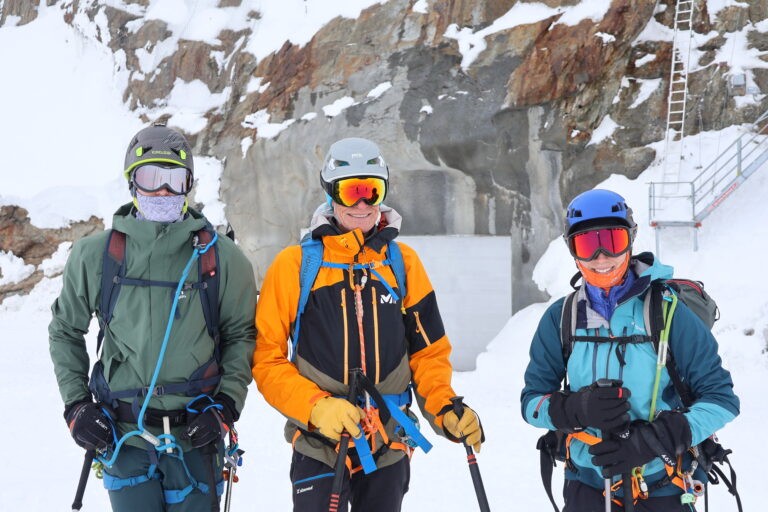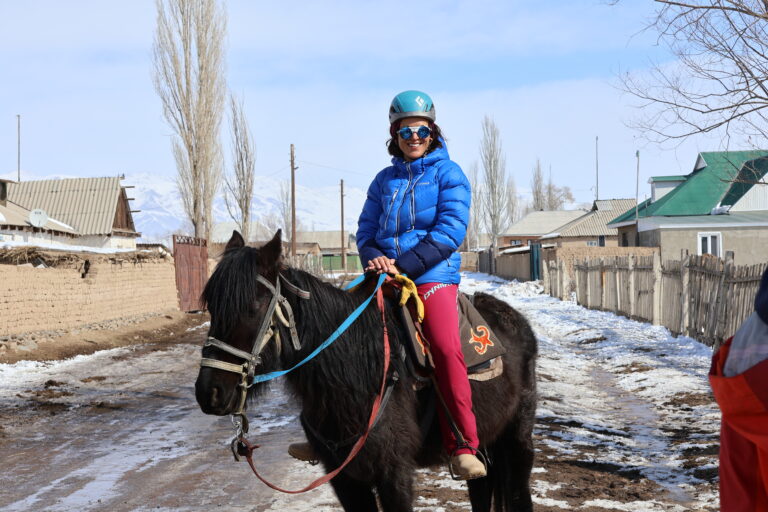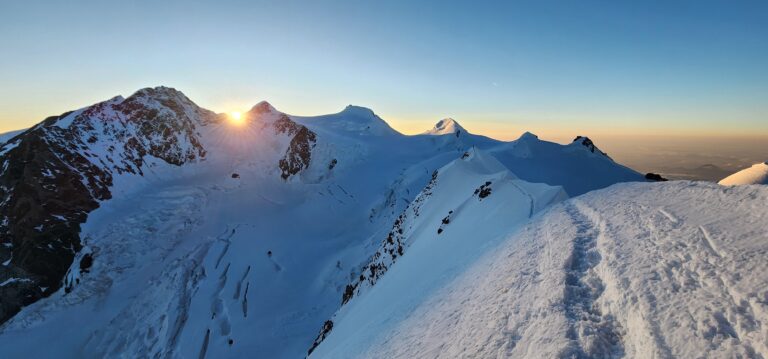Approach and start: Punta di l'Agellu is the first obvious tower to be seen from the road and pass. From the Col de Bavella car park, follow the alpine variant of the GR20.
Option 1: Either go over the Bocca di u Truvone, the first pass at 1434m, descend slightly and then reach the foot of the E face.
Option 2. Fork off at the foot of a beautiful, smooth and colourful wall in the middle of the pines at 1330m, following a vague path with kairns. By picking your way through the scrub, a climber with a keen eye for approaches will save 15 minutes on the approach. Descend a south-west combe that runs along the face, alongside the spur. Don't go all the way down, the start is obvious, at the foot of a small tower detached by a fault, with a visible metal cable running around the ridge. Allow 45mn - 1h max.
Equipment: A dozen quickdraws, 5-6 slings, a small set of friends.
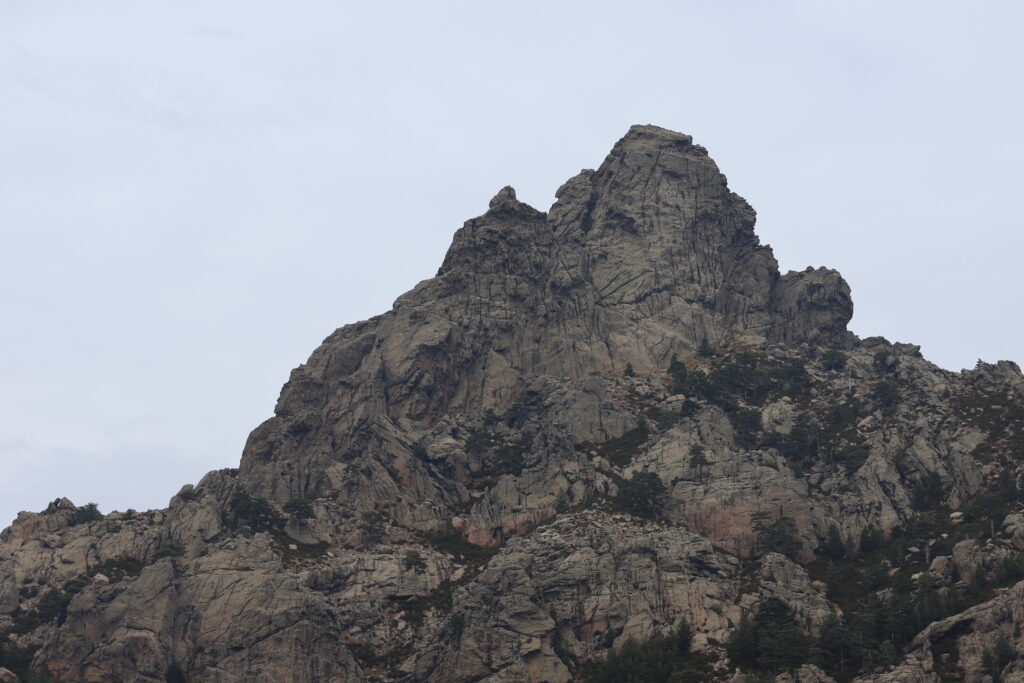
What luck, a week after the Quenza ridge, to have intercepted this request for a big climbing route at the Corsica Madness office! It was a close call. A call one evening with Kévin, on the terrace of the pizzeria "Le Randonneur", and I quickly realised that I had a good pair of customers on the line again, the perfect casting to take me up this second ridge that I've been looking at since last year! With little experience of big route climbing and a desire to get out of their comfort zone, they're Parisian gym climbers who'll pass the pas de 5.
Wake up at 5am and leave at 6am, to avoid the midday heat in August. This route is more exposed to the sun than its twin, the arête de Quenza à l'Arjettu. At this time of day, there's no one on the GR, so it's a pleasant approach if you take option 2. Wearing trousers avoids a few scratches on the thighs! We set up comfortably at the foot of the cable, on a small terrace sheltered by an overhang. As we're also running a bit in the face of this afternoon's forecast thunderstorm, I head straight for an easy pitch equipped with 8' spits, towards the brêche, so as not to use up the margin at the bottom and leave time to enjoy the summit. I still don't know what the real level of my clients will be on granite! Regrouping at the brèche, it's time to start climbing. It's all over the place, but it's impossible to know the exact route... so it depends on the level of the party. I build a belay on friends at the foot of a large wall, which seems to correspond to the announced level 5. First an easy left ascension, then a right traverse towards a clearly visible spit. A short step up a crack that's not easy for beginners, then it's back to the left. One more step to exit. Don't forget to pull and belay the second step. My climber struggles a bit, but I help her... it's OK!
The ridge lies a little lower and we follow it across to a beautiful taffoni wall. I create a belay on a stuck boulder, on a tiny shaded terrace looking west. From here I can see my clients arriving. Then a very easy pitch, and we're at the summit of Agelucciu! To the south the sky is darkening and I'm following the arrival of the storm front live on the radar. We should have plenty of time! We leave our perch and descend via a very short abseil (left-hand descent for very good climbers).
Once again we come up against a beautiful wall of taffoni, which then gives way to a smoother section. From the top of the Agelucciu, I was able to observe the small step across a splayed crack, described as delicate, then the continuation that continues to a gap. According to the description, I should have stopped and taken a belay at the foot of this flared crack, but I preferred to continue to the breach, finding it an uncomfortable spot to stop. The traverse is indeed harder for my client, as is the small reta with a magnificent left-hand hole. The latter provides very good lunulle protection, so at first I grumbled when I discovered a spit 30 cm to the right! But then I realised that it left a quickdraw to be pulled with the right hand, for second-timers in difficulty. Half tolerated, half forgiven 😉 After a little struggle to get over this hurdle, my clients joined me at the belay, and it was time for us to reach the summit! From the breach, the last pitch on cracked slab, to be protected on friends (at least partly in my memory) and very pretty, all on the feet and in placement, absolutely not 5+, much easier. But don't worry, they're happy about it!
The three of us were delighted to reach the summit, me because I'd been looking at it for a long time, all of us because the view was superb, and them because it was already good enough.
Following the obvious path on the north face, we easily find the protected belay under the rocky cap. A single abseil of around 30m, to gain a foothold on a ledge, a zig-zag to the right and left and then a short descent will take us back to the floor of the mouflons, to the pass between Agellu and Arjettu.
For lovers of aesthetic lines and rolling ridges, this is a climb to do if you get the chance. A notch easier than the Quenza ridge, the atmosphere is less airy, the climbing easier and the pitches shorter and less sustained. To tell you the truth, I don't recognise anything in the description in the C2C guidebook, which as usual is far too precise and so gets lost in the details. What's more, I think the ratings are over-estimated. Follow your instincts 😉


